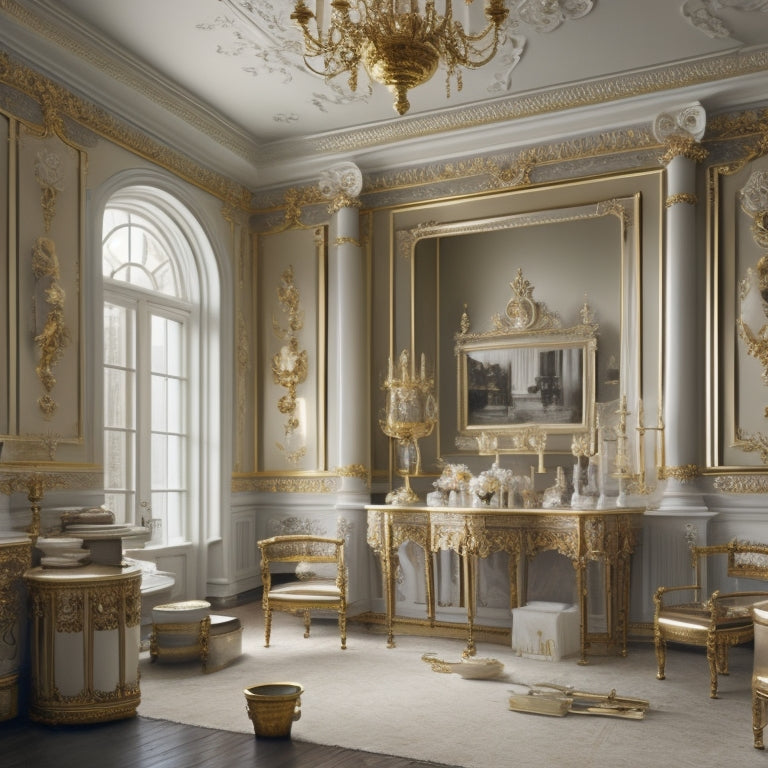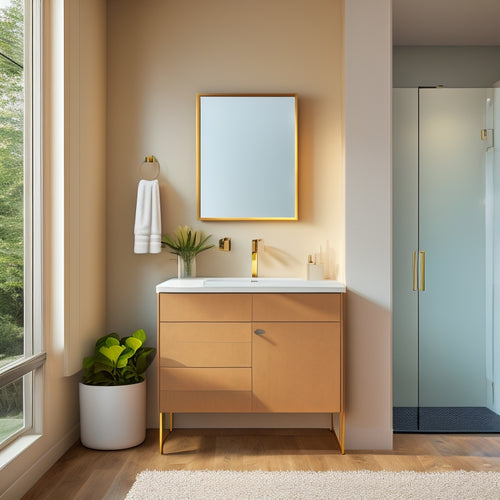
Ultimate Guide to Top-Quality Emulsion Paint
Share
Top-quality emulsion paint offers a durable and versatile coating solution, ideal for demanding environments like bathrooms and kitchens. It exhibits mold resistance, humidity protection, and low VOC emissions, making it a popular choice for professionals and DIYers alike. To achieve a high-quality finish, it's essential to prepare surfaces correctly, apply the paint using the right techniques, and maintain the painted surface with care. By following established guidelines and manufacturer's instructions, you can unlock the full potential of emulsion paint and achieve a long-lasting, professional-grade finish. More nuances of emulsion paint await discovery.
Key Takeaways
• High-quality emulsion paint is designed for high-moisture areas, exhibiting mold resistance and humidity protection properties.
• Proper surface preparation is crucial, ensuring a dry, solid, and clean surface with a suitable primer and smooth finish.
• Apply emulsion paint correctly using two to three thin coats, following manufacturer's instructions, and allowing recommended drying time.
• To maintain longevity, clean painted surfaces regularly with mild detergent and soft sponge, avoiding harsh chemicals and abrasive materials.
• Professionals rely on high-quality emulsion paint, following manufacturer's instructions, and using high-quality rollers and brushes for durable finishes.
Emulsion Paint Characteristics
In addition, particularly designed for bathrooms and kitchens, high-quality emulsion paint exhibits a unique combination of features that make it an ideal choice for these high-humidity areas. It offers exceptional mold resistance, ensuring a hygienic environment by preventing the growth of mold and mildew.
Moreover, its humidity protection properties safeguard against water vapor condensation, reducing the risk of peeling or flaking. This paint is also certified for low VOC emissions, guaranteeing a healthier indoor environment.
Its thermal properties, specifically isothermal behavior, maintain a balanced wall temperature, further enhancing its performance. By incorporating these features, high-quality emulsion paint provides a durable, long-lasting, and eco-friendly solution for bathrooms and kitchens.
Preparing Surfaces for Painting
Prior to applying emulsion paint, it is essential to make sure that the surface is properly prepared to achieve a durable and long-lasting finish. Confirm the surface is dry, solid, and clean, free from dust and debris.
For new surfaces, select a suitable water-based primer to create an ideal bond between the surface and the paint. Use sanding techniques to smooth out any rough edges or bumps, promoting a uniform finish.
Additionally, repair any damaged areas with suitable materials and clean painted surfaces with stains or mold. By following these steps, you'll create a strong foundation for your emulsion paint, guaranteeing a professional-looking result.
Applying Emulsion Paint Correctly
Two to three thin coats of emulsion paint, thinned with water according to the manufacturer's instructions, should be applied to the prepared surface to achieve a consistent, uniform finish. This guarantees ideal paint application and adherence to the surface. To secure a professional-looking result, it is essential to follow proper technique guidelines.
-
Work in well-ventilated areas to prevent inhaling paint fumes.
-
Use high-quality rollers or brushes specifically designed for emulsion paint.
-
Apply paint in sections, maintaining a 'wet edge' to prevent lap marks.
-
Avoid applying paint in direct sunlight or extreme temperatures.
-
Allow the recommended drying time between coats to prevent uneven finishes.
Caring for Painted Surfaces
How can you guarantee the longevity and appearance of your newly painted surfaces in bathrooms and kitchens, where moisture and humidity can pose significant challenges?
Maintaining longevity and surface care requires attention to detail and the right cleaning techniques post application. For a durable and visually appealing finish, it is crucial to clean your painted surfaces regularly, ideally with a soft sponge and mild detergent. Avoid using harsh chemicals or abrasive materials that can damage the paint.
Additionally, make sure good ventilation and avoid exposing your painted surfaces to direct sunlight or extreme temperatures.
Using Emulsion Paint Professionally
Professionals in the architectural, design, and painting industries frequently rely on high-quality emulsion paint to deliver durable, low-maintenance finishes in demanding environments.
To achieve best results, professionals should consider the following industry insights and professional tips:
-
Always read and follow the manufacturer's instructions for surface preparation, application, and drying times.
-
Guarantee adequate ventilation and use of personal protective equipment (PPE) during application.
-
Use high-quality rollers and brushes to achieve a smooth, even finish.
-
Consider using a primer to enhance adhesion and coverage.
-
Keep records of paint usage, including batch numbers and application dates, for quality control and warranty purposes.
Frequently Asked Questions
Can Emulsion Paint Be Used on Exterior Surfaces?
'While emulsion paint can theoretically be used on exterior surfaces, its weather resistance is limited, making it unsuitable for harsh outdoor conditions. Proper surface preparation is essential, but even then, it's not a recommended choice for exterior applications.'
Is Emulsion Paint Suitable for Painting Over Wallpaper?
Emulsion paint can be used over wallpaper, but thorough wallpaper preparation is essential. Make sure the paper is securely attached, clean, and dry. Apply a coat of primer to hide patterns, then apply emulsion paint for a smooth, even finish.
Can I Mix Emulsion Paint With Other Types of Paint?
When combining emulsion paint with other types, maintain color consistency and finish quality by following manufacturer guidelines, as incompatible mixtures can compromise performance, leading to uneven finishes and reduced durability.
How Long Does Emulsion Paint Take to Fully Dry?
Did you know that 80% of paint failures are due to improper drying? Emulsion paint's drying time typically ranges from 1-2 hours to touch dry, with full cure achieved in 24-48 hours, depending on environmental factors such as temperature, humidity, and ventilation.
Can Emulsion Paint Be Used on Non-Porous Surfaces Like Metal?
Emulsion paint can be used on non-porous surfaces like metal, but requires proper metal preparation and surface priming with a suitable primer to guarantee strong adhesion and a durable, long-lasting finish.
Related Posts
-

Efficient Bathroom Cabinet Solutions With Drawers
You'll be amazed at how cleverly designed bathroom cabinets with drawers can alter your morning routine, providing up...
-

Contemporary Glass Door Cabinet Designs
As you conceptualize your contemporary glass door cabinet design, imagine the sophistication it will bring to your sp...
-

Revolutionizing Mimosa Bars With Creative Printables
Revolutionize your mimosa bar with creative printables that take the experience to the next level. Elevate the setup ...


